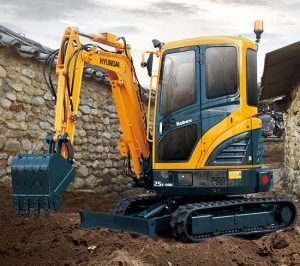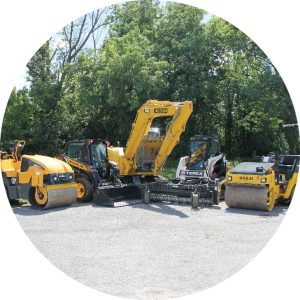How to Boost ROI of Compact Equipment Hydraulics
Back in the not-so-old days, heavy equipment relied on engine horsepower to put extra muscle behind hydraulic attachments. With the advent of stringent air quality standards and the need to reduce overall fuel consumption, engines are now smaller and less powerful. They still do their job, thanks to overall efficiencies, but this fundamental change has forced hydraulic systems to become more “self-sufficient.”
To accomplish that, manufacturers have also made fundamental changes to hydraulic systems, introducing higher quality components and advanced technologies that make compact equipment hydraulics smarter, more powerful, and more efficient than ever. With the resulting higher hydraulic pressure and flows, high-performance attachments can tackle even the toughest applications.
Protecting your hydraulics is more important than ever

Improvements in modern your wheel loaders and skid steers allow you to be more productive, saving time and generating more revenue. To pull that off, though, you must take extra care to protect their more sophisticated hydraulic systems. As with most preventive maintenance, the details are not difficult or particularly time-consuming, but they must be observed consistently if you hope to get the greatest productivity and return on investment.
-
Keep fittings clean
“Clean” is not a word we generally associate with outdoor worksites, and hydraulics are well-known for their susceptibility to contaminants. This problem is exacerbated by the fact that the internal workings of today’s hydraulics operate within tighter tolerances than older versions. So even smaller contaminants can cause damage. Every OEM specifies a regimen of regular maintenance, including procedures and intervals for replacing filters and hydraulic fluid, and fluid testing.
Beyond that, though, operators should always clean hydraulic attachments and machine fittings – both ends of the coupling — every time a change is made. Carrying a shop rag makes that quick and easy.
- Never reattach any connector without first cleaning it. It’s not unusual for a disconnected hose to rest on the ground before being reconnected, picking up bits of dirt or debris.
- Any time you remove a fluid reservoir cap, wipe it down before replacing it.
- Release any pressure remaining in the system after disconnecting an attachment. That way the operator won’t have to loosen the fittings, which opens the door to contaminants. It will be easier to reconnect unpressurized lines next time, too.
- Cover connectors with a plug or sealed cap when not in use.
Your cleanliness plan will be most effective if you think ahead about which attachments you will need and when. That way, you can minimize the need to swap out hydraulic lines.
-
 Protect hydraulic fluid integrity
Protect hydraulic fluid integrity
Every OEM provides oil specifications, for machines such as skid steers or wheel loaders and also for attachments. These should match, because incompatibility can cause performance problems. One other recommendation to keep in mind – never connect a hydraulic attachment unless you’re certain about the type and condition of hydraulic fluid previously used in it. If the residual fluid is not compatible with what your machine uses, or it has degraded, you’re inviting trouble. The only way to be 100% sure here is to use only your own attachments.
-
And speaking of matching . . .
Getting the longest life and best performance from your compact equipment hydraulics also depends on using it as intended. Machines and attachments have to work in tandem to work efficiently, so their capabilities must support that. Pairing a tool that requires maximum pressure and flow with a wheel loader or skid steer that cannot produce enough hydraulic horsepower will result in slower, lower quality performance.
That reduces the machine’s earning power, which reduces your return on investment. Worse, there is such a thing as too much pressure and flow, beyond what the attachment is built to tolerate. This will result in premature wear on all the components involved. A flow metering valve may help, but knowing the tolerances of your equipment is a must. If you’re in the market for a new attachment, be sure to check this detail before buying.
-
Use the on-board technology
New compact equipment comes with a variety of tech-driven improvements that facilitate smoother, more efficient hydraulic function and also give operators greater control of the machine and attachments. Learning how to use these technologies effectively fine-tune productivity will not only make jobs go faster but extend the life of compact hydraulic systems and other components.
